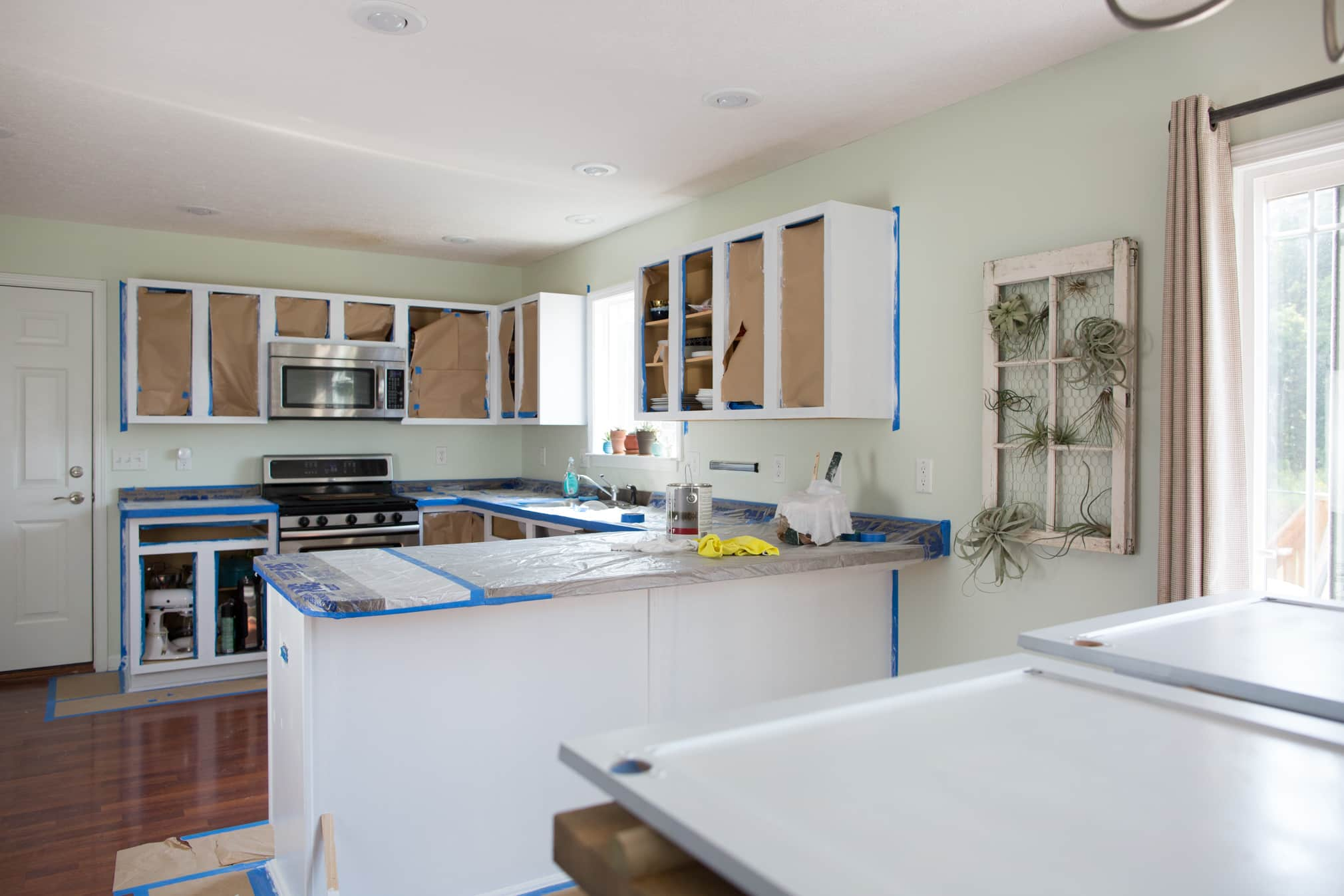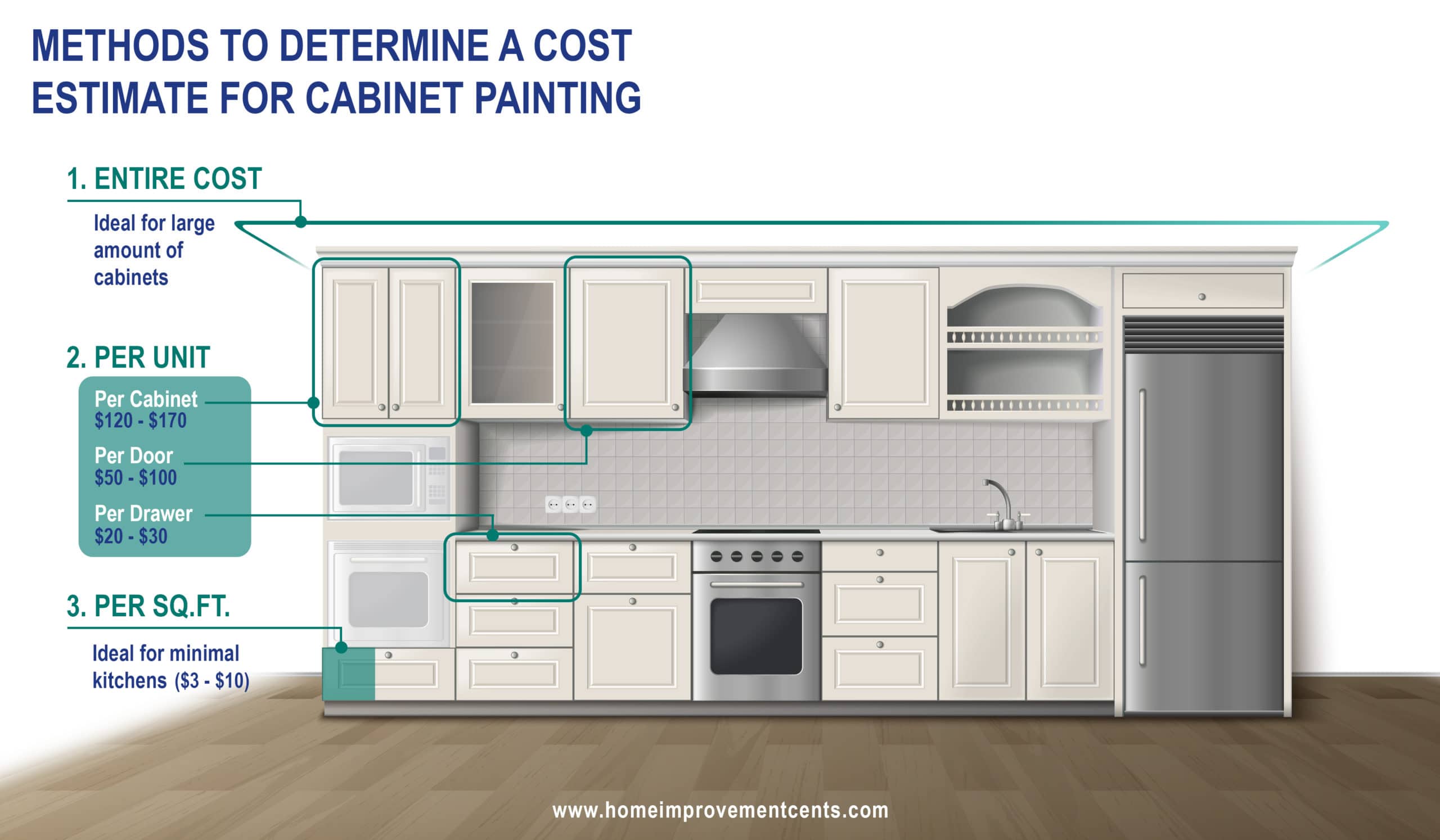Cost Factors Influencing Professional Cabinet Painting: How Much Is Professional Cabinet Painting

The transformative power of a fresh coat of paint on your cabinets is undeniable, breathing new life into your kitchen or bathroom. However, the cost of achieving this transformation can vary significantly. Understanding the factors that influence the price will empower you to make informed decisions and manage your expectations. This journey into the economics of cabinet painting is not merely about numbers; it’s about appreciating the artistry and craftsmanship involved in this meticulous process.
How much is professional cabinet painting – The cost of professional cabinet painting is a multifaceted reflection of several key elements. It’s a harmonious blend of materials, labor, preparation, and the desired finish, each contributing its unique note to the overall symphony of expense. Understanding these individual components allows for a deeper appreciation of the final price.
Factors Determining the Cost of Professional Cabinet Painting
The price you pay for professional cabinet painting is a carefully orchestrated balance of several key factors. The following table offers a detailed breakdown of these influential elements, providing insight into their respective contributions to the overall cost.
| Factor | Description | Cost Impact | Example |
|---|---|---|---|
| Materials | Paint, primer, sandpaper, brushes, rollers, and other supplies. High-quality materials generally lead to a superior finish but increase the cost. | High | Premium-grade paint can cost significantly more than standard options, potentially doubling or tripling the cost of paint alone. |
| Labor | The time and expertise of the painting professionals, including preparation, painting, and cleanup. This is often the largest cost component. | High | The labor cost for a large kitchen with intricate details will be substantially higher than for a small bathroom with simple cabinets. |
| Preparation | This crucial step involves cleaning, sanding, filling imperfections, and potentially removing hardware. Thorough preparation significantly impacts the final result and longevity. | Medium | Extensive repairs or the need for significant surface preparation, such as stripping old finishes, will add considerably to the preparation costs. |
| Finishing | The final touches, including multiple coats of paint, ensuring a smooth and even finish, and potentially adding specialized effects. | Medium | A high-gloss finish typically requires more coats and more meticulous work than a matte finish, leading to a higher cost. |
| Cabinet Access and Location | Difficult-to-reach cabinets or those located in awkward spaces increase labor costs. | Medium | Cabinets located in a second-story room with limited access may increase labor costs compared to ground-floor, easily accessible cabinets. |
Paint Type and Cost Variations
The type of paint selected plays a crucial role in determining the overall cost. Different paints offer varying levels of durability, finish, and application requirements. This section explores the cost implications associated with different paint choices.
Latex paints are generally more affordable than enamel paints, but enamel paints offer superior durability and a harder, more resistant finish. The increased durability of enamel justifies the higher cost for projects demanding exceptional longevity and resilience. Choosing a specific sheen (matte, satin, semi-gloss, high-gloss) also influences cost, with high-gloss often requiring more coats and meticulous attention to detail, thus increasing the overall expense.
Cabinet Material and Cost Variations, How much is professional cabinet painting
The material composition of your cabinets directly influences the preparation and painting process, subsequently impacting the overall cost. Different materials require varying levels of preparation and may react differently to paint.
| Cabinet Material | Cost Impact | Reasoning |
|---|---|---|
| Solid Wood | Medium to High | Solid wood requires careful preparation, potentially including sanding and filling, to achieve a smooth surface for painting. The cost depends on the wood type and condition. |
| Veneer | Medium | Veneer requires careful handling to avoid damage during preparation and painting. The cost is generally lower than solid wood but higher than MDF. |
| MDF (Medium-Density Fiberboard) | Low | MDF is relatively easy to prepare and paint, resulting in lower labor costs. However, it is more susceptible to moisture damage. |
| Laminate | High | Laminate requires specialized preparation and primers to ensure proper adhesion and prevent peeling. The additional preparation steps add to the overall cost. |
Finding and Choosing a Professional Painter

Embarking on the journey of transforming your kitchen cabinets through professional painting is akin to a spiritual practice; it requires discernment, preparation, and trust in the process. The right painter will not only enhance your space but also elevate your experience, reflecting the harmony you seek in your home. Choosing wisely is paramount.
The path to finding a reputable cabinet painter involves a multifaceted approach, combining digital exploration with the wisdom of personal recommendations. This process should be approached with mindfulness and intention, ensuring you connect with a painter who shares your vision and values.
Online Search Strategies and Referrals
Harnessing the power of the internet is the first step. Utilize search engines like Google, Bing, or specialized home improvement websites, entering terms such as “cabinet painters near me,” or “professional kitchen cabinet refinishing [your city/region]”. Scrutinize online reviews meticulously; pay close attention to both positive and negative feedback, looking for recurring themes or patterns. Equally important is seeking referrals from trusted friends, family, or neighbors who have recently undertaken similar projects. Their firsthand experiences provide invaluable insight.
Pricing Structures of Painting Companies
Different painting companies employ various pricing models. Some charge by the hour, others by the individual cabinet, and some opt for a fixed price per project. Hourly rates offer flexibility but can be unpredictable; per-cabinet pricing provides clarity for smaller projects, while per-project pricing offers a fixed budget, ideal for larger undertakings. Understanding these structures allows for informed comparison and negotiation.
Questions to Ask Potential Painters
Before committing to a painter, consider these essential inquiries. These questions are not mere formalities but rather tools to gauge their expertise, professionalism, and commitment to excellence.
- What is your experience with cabinet painting specifically?
- Can you provide references from past clients?
- What is your process for preparing cabinets before painting (e.g., sanding, priming)?
- What type of paint do you use, and why is it suitable for cabinets?
- What is your warranty or guarantee on your work?
- What is your estimated timeline for completion?
- What is your payment schedule?
- Do you have insurance to cover any potential damages?
Essential Qualifications and Certifications
Selecting a painter based solely on price is a short-sighted approach. Prioritize experience, professionalism, and a proven track record. Look for painters with several years of experience specializing in cabinet painting. While specific certifications aren’t universally required, affiliations with professional organizations or evidence of ongoing training demonstrate a commitment to excellence. Consider it a reflection of their dedication to their craft. Thorough preparation and meticulous attention to detail are paramount. This diligence speaks volumes about their approach to the project and their respect for your home.
Project Planning and Preparation

Embarking on a cabinet painting project is akin to a spiritual journey of transformation. Just as a sculptor patiently chisels away at raw material to reveal the inner beauty, so too must we meticulously prepare our cabinets for a stunning rebirth. This preparatory phase is not merely a technical necessity; it is a sacred act of laying the foundation for a masterpiece. The attention to detail here directly reflects the final outcome, mirroring the principle that a strong foundation leads to lasting beauty and grace.
Careful planning and preparation are the cornerstones of a successful cabinet painting project. A thorough understanding of the steps involved, from cleansing to priming, ensures a smooth, even finish that will stand the test of time. This section guides you through the essential steps, offering insights into efficient techniques and cost-effective strategies.
Cabinet Preparation Checklist
The following checklist Artikels the essential steps in preparing your cabinets for painting. Each step is a brushstroke in the creation of a flawless finish, a testament to your dedication and care.
- Thorough Cleaning: Begin by meticulously cleaning the cabinet surfaces. Use a degreaser to remove any grease or grime. This cleansing ritual purifies the surface, preparing it to receive the transformative paint. A clean surface is the canvas for a perfect painting.
- Surface Repair: Fill any cracks, holes, or imperfections using wood filler. Allow it to dry completely and sand smooth. This step represents the healing and restoration phase, addressing any imperfections and preparing for a seamless finish. It is akin to mending a broken vessel, making it whole and ready for renewal.
- Sanding: Sand the entire surface with fine-grit sandpaper (120-220 grit). This step refines the surface, creating an even texture that promotes optimal paint adhesion. This is the smoothing process, removing any rough edges and preparing for a flawless, harmonious finish. It is a meditative process, akin to smoothing out wrinkles in a fabric, revealing its underlying beauty.
- Priming: Apply a high-quality primer designed for cabinets. This critical step ensures optimal paint adhesion and prevents bleed-through from the underlying wood. The primer acts as a protective shield, a layer of preparation for the final transformation. It is the quiet, unseen work that underpins the final masterpiece.
Surface Preparation Methods
Several methods exist for surface preparation, each with its own advantages and disadvantages. Choosing the right method is crucial for achieving the desired results efficiently and cost-effectively. The selection process is akin to choosing the right tools for a spiritual practice – each method serves a unique purpose, and understanding their nuances is key to success.
- Hand Sanding: This traditional method provides excellent control and allows for precise attention to detail. However, it is labor-intensive and can be time-consuming. Think of it as a mindful practice, allowing for deep connection with the material and a thorough preparation.
- Power Sanding: Power sanders, such as orbital sanders, significantly speed up the sanding process. However, they require skill to avoid damaging the cabinet surfaces. This is the path of efficiency, requiring skill and precision to achieve a flawless result. It’s a balancing act between speed and control.
- Chemical Stripping: This method removes old paint or finishes, but requires careful handling due to the harsh chemicals involved. It is a powerful but potentially hazardous method, akin to a cleansing fire that removes the old to make way for the new. It demands caution and respect for its potency.
Paint Quantity Estimation
Accurately estimating the amount of paint needed prevents costly mistakes and ensures a smooth workflow. A precise calculation is essential for efficient resource management, a reflection of mindfulness and respect for materials. This careful planning is the foundation for a successful project.
To estimate the amount of paint needed, consider the total surface area of your cabinets and the number of coats required. A general rule of thumb is to apply two coats for optimal coverage and durability.
Surface Area (sq ft) x Number of Coats x Paint Coverage (sq ft/gallon) = Gallons of Paint Needed
For example, if your cabinets have a total surface area of 100 sq ft, you need two coats, and your paint covers 350 sq ft per gallon, you would need approximately 0.57 gallons of paint. Always round up to ensure you have enough paint to complete the project. This calculation represents a meticulous approach to resource management, ensuring sufficiency without waste.
